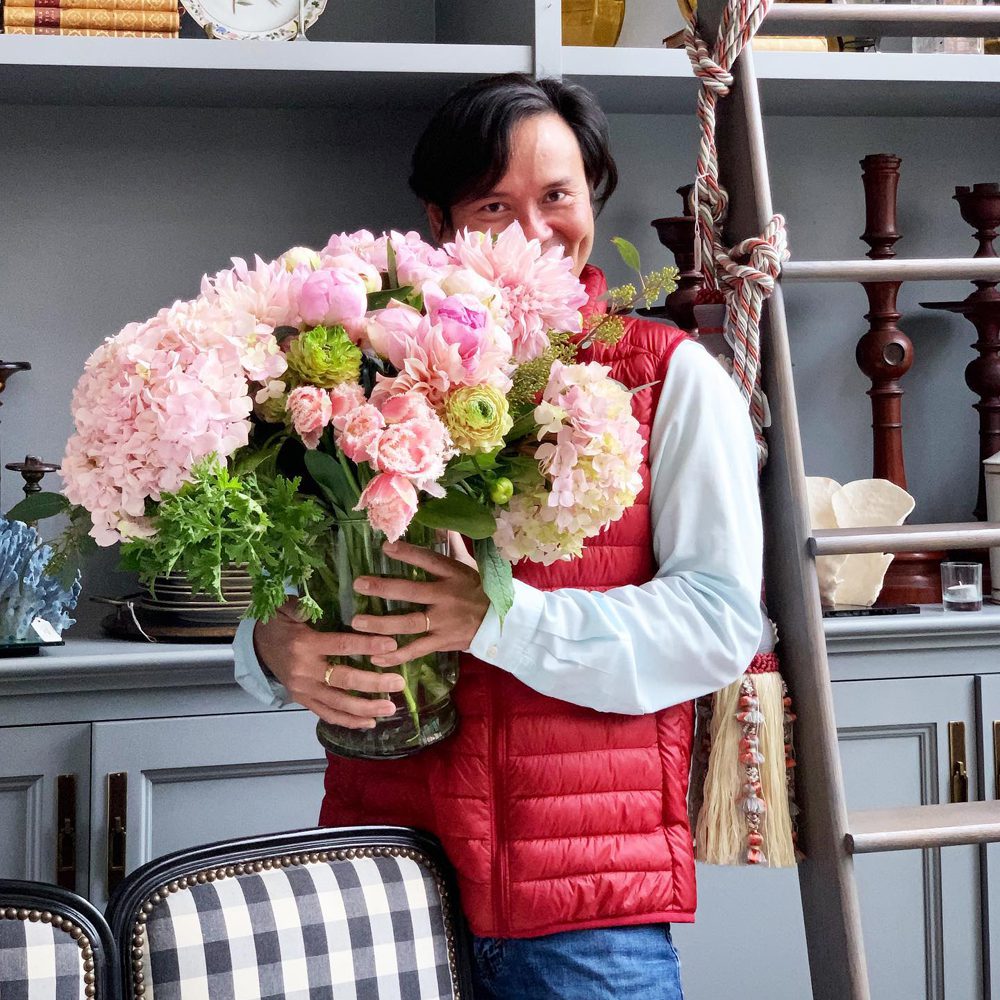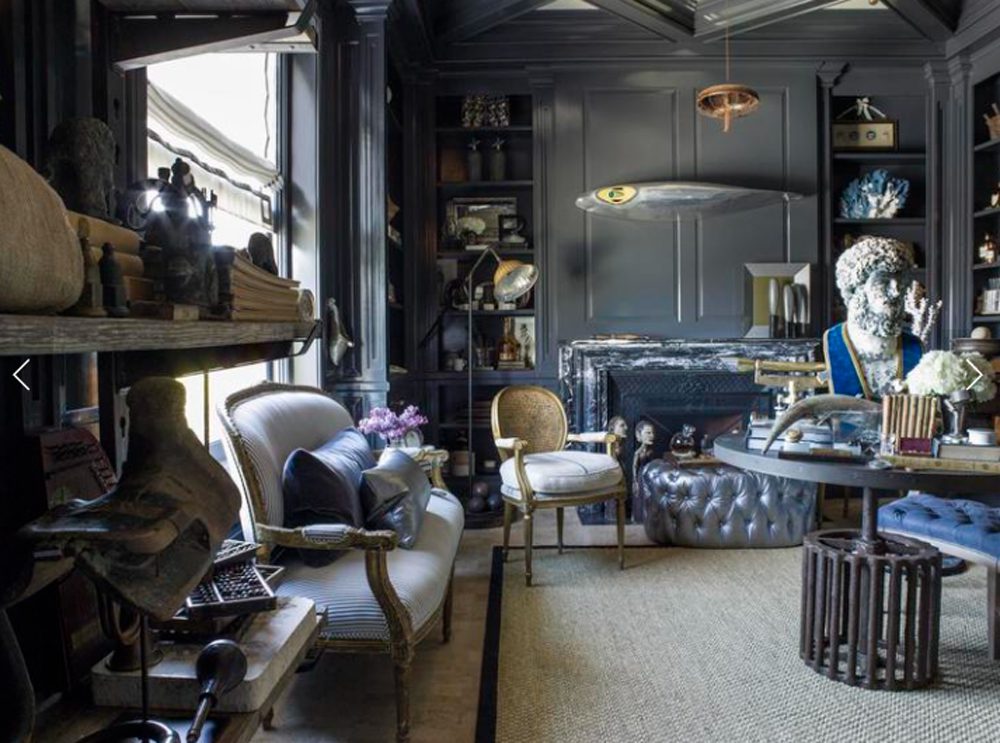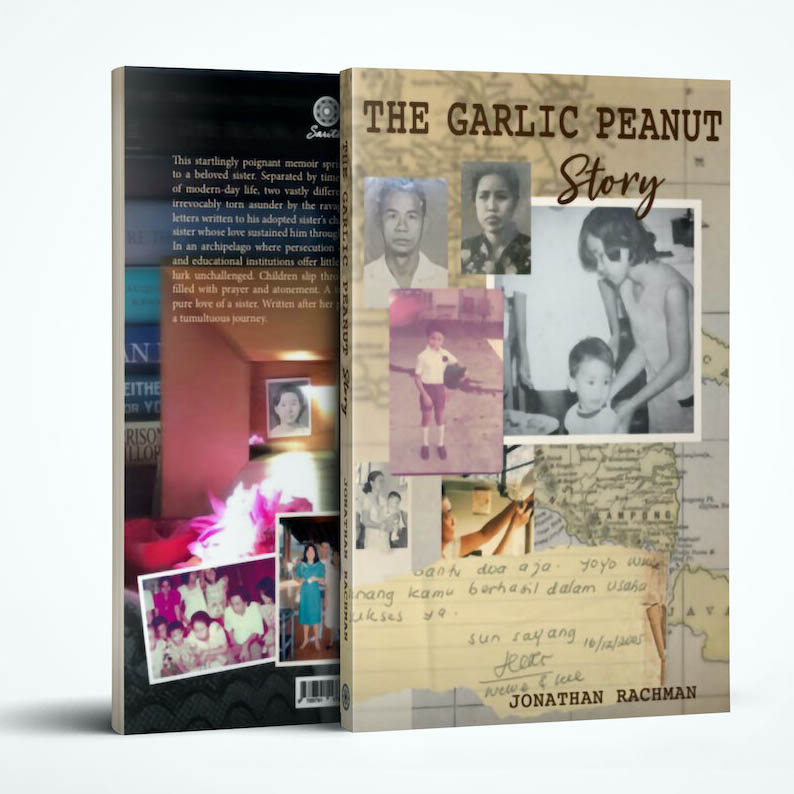
Celebrity interior designer and event planner, Jonathan Rachman, who’s worked for high profile personalities and brands including Marc Jacobs, The Four Seasons Luxury Hotels, and St. Regis Hotels, recently released his first memoir The Garlic Peanut Story.
The autobiography is a tribute to a beloved adopted sister penned after her passing. Through Jonathan’s letters of gratitude to his sister, he reveals a tumultuous journey beginning in Indonesia, an archipelago where persecution of LGBTQ remains commonplace.
In The Garlic Peanut Story, he expresses his gratitude for a sister whose love sustained him through a painful childhood while recalling the pain of being born different and growing up queer in a large, dysfunctional family.
He also contemplates his travels abroad and the discovery of gay mentors who empowered him with good counsel and kindness.
Rachman, who’s been named one of America’s Top Designers, recently chatted with Instinct about his celebrated career plus his new memoir.
https://www.instagram.com/p/CI8rn1VJZQp/
Instinct Magazine: How did you find yourself in the world of interior design?
Jonathan Rachman: I will try to be brief, otherwise I will write you a novel J .
One of my faves hashtags is #myunplannedlife. Truly, I never planned to be an interior designer. After I graduated from the University of San Francisco, for 10 years I was caught in the miserable corporate America life. I (not exaggerating) literally had over 30 jobs: I moved from job to job in quest of finding the perfect job.
I had no problem getting a job, but when I am not happy – either with the nature of the job, the company, the politics or the schedule (including the fact that I could not take any vacation unless I complete the first year and even so) – I quit.
The longest job I held was maybe for about two years, but only because I negotiated a nice package which included a 5-6 week vacation annually plus all expenses paid with a nice salary. But the nature of the job was still unbearable. As a VP or Director, I was on call 24/7 having to deal with corporate BS I’d rather not get into.
https://www.instagram.com/p/CJRSD0ksWXk/?utm_source=ig_web_copy_link
Fast forward: Stephen, my then-partner (now husband), and I moved to Portland for about two years to accommodate the licensing process in order for him to be a psychologist. I worked as an executive for a non-profit with a lot of politics which were not much different from my corporate life.
In 2002, we decided to move back to San Francisco. Within a month, I opened a tiny flower shop with the help and support of Stephen, renting a space in a Pacific Heights hair salon.
Stephen and I worked so hard from 2 am to 6-7pm daily, at times 6-7 days a week. But I absolutely loved it -it was rewarding and invigorating. But we had no health insurance and I treated my husband as if he was my help ;)) – which was not the best thing for our relationship. He went back to working as a psychologist for our sake, and by this time I could have an employee.
Marc Jacobs and his team gave me my big break by hiring me as their floral designer and later recommending me to Madonna, Oprah, Sarah Jessica and other celebrities. The Four Seasons in San Francisco appointed me as their VIP florist.

From floral design, I ventured into event design and MTV/VH-1 became my client. One time, I flew to Paris via Frankfurt for work and by chance, I sat next to the wife of the Ambassador of Austria, who happened to know my ‘adopted’ American mom. The ambassador’s wife was in the process of organizing the United Nations’ 60th anniversary and hired me at 38,000 feet high up in the air as the event designer. Since then, I joke around that that was the one and only time that I became the member of the ‘mile high club.’ That celebration put my name on the map not only locally but worldwide.
The ladies who lunched and went to all the parties I designed tracked me down and invited me to ‘decorate’ their homes. I told them that I never went to interior design school, but I thought I would be a good ‘fluffer’ – tongue and cheek. They laughed, I laughed, and I began ‘fluffing’ their houses weekly. Weeks turned into months and months turn into years. Later, they asked me to design their pied a terre, summer homes, beach houses, mansions and hotels. One project led to the next, each bigger and more serious in size and nature. The rest is history.
https://www.instagram.com/p/CJzA5iyMJ6L/
IM: Who were your biggest personal and professional inspirations?
JR: Personally, my late sister Wewe (pronounced wai-wai), who was the inspiration for my memoir The Garlic Peanut Story; my sister Edna as well as my female cousin Tian; my teacher Ms. Teresa Utama; my Mom and Grandma – they all have been my biggest inspirations. They all have something in common: they love me for being me. Plus, they were persistent and strong in their own way. I joke that I am a feminist trapped in a homosexual body.
My father has also been a role model. When Stephen and I came out to my parents, he asked my husband to read a verse from the bible: Corinthians 13:13: “And now these three remain: faith, hope and love. But the greatest of these is love.” He told us “as long as you love each other, that’s all Mom and Dad care about.”
Ever since that happened, my father and I became closer than ever and I see him as a true, loving, kind Christian – the one who is non-judgmental. He has also grown to become a kinder, softer male and he is able to admit his shortcomings and mistakes and apologized for them.
Professionally speaking, I am in awe and inspired by the late Oliver Messel who wore many hats: stage, fashion, and costume designer as well as interior designer. He is multi -talented and versatile in his style.
Christian Dior for his simplicity which evokes elegance. Lastly, Hubert de Givenchy for his timeless, classic and romantic design.

IM: How would you describe your design style in 3 words?
JR: Just like my upcoming first monograph, Currently Classic, a gorgeous coffee table design book to be published by the French publisher, Flammarion. My style is Current, Classic and Personalized.
IM: What do you think is the biggest mistake people make when they begin their own interior design on an apartment or house?
JR: Trying to follow trends: what’s ‘hot’ while not realizing that the trends they try to implement in their new home may not work for various reasons (style, architecture, personality etc). And they may not represent the true style of the owner. Worse, it may date their house or apartment sooner then they know. I recommend to always know themselves as an owner, to stay true to themselves (vs. following the trends of what’s hot now), and to keep it timeless!

IM: What has been the biggest shift for you in your career during COVID?
JR: Nothing that I ever expected. Another #myunplannedlife moment! While I empathize with business owners and designers who had to downsize and lose their businesses, COVID has done just the opposite to my career. I have never been this busy in my design career.
I am fortunate to have clientele base who are able to afford to hire my firm and I to design their properties. They acquired more houses and properties – at times multiple properties at the same time – as well as renovate, expand, upgrade and redesign their current properties. I am truly grateful and blown away.

IM: Tell us about your book The Garlic Peanut Story, starting with its name.
JR: The title of The Garlic Peanut Story is inspired by the very act that includes garlic peanuts as a symbol of unconditional love from my (late) sister to me when we were children. I lost my sister over 14 years ago to cancer and she left a 4-year-old son and a 6-year-old daughter (they are not 18 and 20).
I wanted her kids to remember and know about their Mom from my point of view, as my gift and promise to my sister in a form of letters. When I started writing the letters, it dawned on me that her story – our story – is bigger than us.
Simply said, I was a ‘sissy boy’ which led to many stories of horrendous bullying, physical, mental and sexual abuse. This included rapes that I had to endure as a child from as early as 4-years-old all the way to my teen years. All these happened in Indonesia and they continued to repeat when I moved to the U.S. in one form or another haunting me for half of my life.
My Sister was my angel on earth. Not only did she accept and love me unconditionally as a child and adult, she was the first person who made me feel OK to be who I was. And she protected me physically and emotionally all my life, as long as she lived, in her own way, ahead of her time, ahead of our time. I owe my life to her.
https://www.instagram.com/p/CKuw4Q1s6j5/
As an internationally recognized designer, people have the perceptions that I have a glamorous, happy life and I am a peppy, positive person who has been so blessed and fortunate. While they are all true – I am that person – there was a huge part of my past, as a child and a young person, who had a terribly sad childhood and youth. I lived in nightmares for decades.
I wanted to share my memoir as a tool not only to tell the world what an amazing human my Sister was, a person with not a drop of hate, who was always so brave, generous and full of love, but also to share with the world my dreadful and horrific childhood and past.
It is also my way to pay it forward. Now, I have truly an amazing and blessed life with my husband. My husband and I are donating the proceeds of this book to orphans and children of Bali for their education and needs. But beyond that, the value of what people may learn from my book is my way to pay it forward.
https://www.instagram.com/p/CGOUfp3JsBB/
IM: What are you hoping readers get out of it?
JR: A few things for sure.
It is a story of love and forgiveness. I want readers to know that no matter how horrific my life was, I survived through the unconditional love of my sister (and other ‘angels’ on earth).
The power of forgiveness, not only for myself but for those who have inflicted the pains and sufferings I went through. And to start a kinder, more gentle and loving world, even with those who have wronged us.
To be able to speak and discuss about the subject of child abuse, bullying and rape as an adult without shame and taboo so that people may learn that this things happened, even to someone who may seem perfectly fine in our eyes.
To let some readers know that they are not alone. And if this happened to them, it is never their fault – that victim blaming is not ok. We never know what someone is, or was, going through, and what pains and sufferings they might endure to be the person that they are now.
Last but not least, to teach the world acceptance and tolerance, to allow others to be who they are, to be more kind and loving, and to spread the love.
https://www.instagram.com/p/CKjzXQCs_PD/
You can follow Rachman on Facebook and Instagram, or visit his official website. Click here for more information and to purchase your copy of The Garlic Peanut Story.
(Some responses were slightly edited for clarity)
